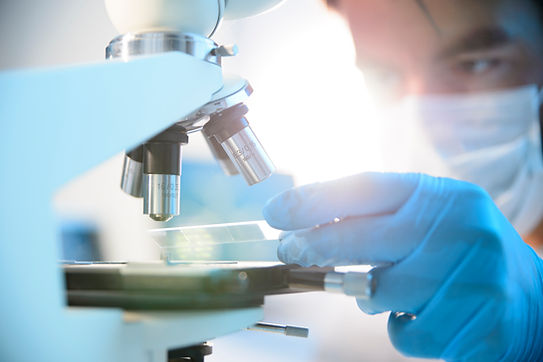Women's Health and Wellness

Cervical Screening
-
Clinician collection
-
Self collection

Cervical Screening
Cervical Screening Test (CST) is recommended for women between 25 and 74 years of age every 5 years (or later if not sexually active at 25).
The patient can choose to have a clinician collection which allows for a visual examination of the femaile intimate area or the patient can choose to perform a self collection without a visual examination.
The CST is designed to detect Human Papillomavirus (HPV), the most common cause for cervical cancer and does not detect non HPV cancers. Patients who have been vaccinated against HPV are still recommended to perform their routine CST.

Breast Screening
-
Mammogram
-
Self breast exams
Breast Screening
Monthly self breast checks are recommended for women from 20 years of age for early detection of breast changes and Mammograms for women between 40 and 74 years of age every 2 years. Women who do not commence the national breast cancer screening program in their 40's will be sent an invite letter at 50 years of age from the BreastScreen Australia Program
For any self detected changes outside of the National Breast Cancer Screening Program the patient can have a clinician examination and may be provided with a referral for a scan and/or a biopsy to determine if a lump is cancerous or be nign.
PCOS and Ovarian Conditions
-
Ovarian cysts
-
Irregular periods
-
Ovarian insufficiency
-
Ovarian torsion
-
Ovarian cancer

PCOS and Ovarian Conditions
Polycystic Ovarian Syndrome (PCOS) is a common hormone disorder that can affect women as early as in their teens and continue until menopause.
PCOS can cause a number of symptoms including irregular or absent periods, excessive hair growth (hirsutism) on face and body or hair thinning on scalp, acne, dark patches of skin on the back of your neck, armpits or groin area (acanthosis nigricans) and weight gain.
PCOS can have long term health impact including infertility, endometrial cancers, type 2 diabetes mellitus and heart disease.
Changes in periods, abnormal bleeding, abdomen pain and bloating can easily be investigated and treatment should not be delayed or symptoms assumed " normal".

Endometriosis and Uterine Conditions
-
Endometriosis
-
Adenomyosis
-
Heavy and irregular periods
-
Fibroids
-
Polyps
-
Pelvic inflammatory disease
-
Uterine prolapse
-
Uterine and cervical cancers
Endometriosis and Uterine Conditions
Endometriosis and adenomyosis are common uterine conditions where the uterus lining grows outside the uterous that can affect women as early as in their teens and continue until menopause.
Uterine lining conditions can cause a number of symptoms including irregular or heavy painful periods (risk for iron deficiency anaemia), painful intercourse and pain between periods, abdominal pain and cramping, diarrhea, constipation or bloating and infertility.
Benighn uterine growths like fibroids and polyps may be asymptomatic or may cause heavy bleeding or irregular periods and in some cases lower abdomen pain and frequent urination.
Changes in periods, abnormal bleeding, abdomen pain and bloating can easily be investigated and treatment should not be delayed or symptoms assumed " normal".
Mature and Ageing Women
-
Perimenopause
-
Menopause
-
Sarcopenia
-
Osteopenia
-
Osteoporosis
-
Urinary incontinence
-
Bladder prolapse
-
Bladder cancer

Mature and Ageing Women
Perimenopause and Menopause affect all women at some point of thier lives most commonly between mid 40's to early 50's and in some cases earlier or as a result of medical conditions or surgeries. Perimenopause and menopause result from a change in hormones and the end of a womens fertility. Common symptoms include irregular or absent periods, hot flushes and night sweats, emotional changes and changes in hair, skin and weight.
Sarcopenia is the reduction in muscle mass and often begins between 50 to 60 years of age and significantly increasing over the age of 65 contributing to a reduction in strength and frailty. Osteopenia and Osteoporosis is a reduction in bone mineral density and often begins after 70 years of age, however can start earlier in people with risk factors eg; medical conditions, surgeries and specific medications and also contributing to bone fractures and frailty.
Urinary incontinence is the loss of bladder control which may be caused by stress (sneezing, coughing or lifting heavy things), by functional impairment of the bladder muscles or nerves or from previous surgeries. Urinary incontinence may have warning signs eg: urinary frequentcy and/or urgency or there may be no warning at all before the urine leaks from the bladder.
Bladder prolapse is when the bladder attachment structures lose their strength and the bladder creates a bulge into the vagina wall. Bladder prolapse can result in pressure, difficulty urinating, back pain and affect bowel function. Bladder prolapse can be caused by pregnancy and childbirth, hysterectomy, ageing and hormone changes, excessive weight, lifting heavy objects, repetative straining from constipation, coughing or genetics.
Bladder cancer has similar symptoms to urinary incontinence and urinary tract infections and should not be ignored eg; urinary frequency, urgency, painful/burning urination, blood in the urine and lower back, abdomen or pelvic pain.

Vagina and Vulva
Conditions
-
Thrush
-
Bacterial vaginosis
-
Dermatitis
-
Vaginal atrophy
-
Lichen planus
-
Lichen sclerosus
-
Bartholin cyst
-
Vulva cancer
Vagina and Vulva Conditions
Thrush and bacterial vaginosis are common vaginal condition that can occur in women of any age.
